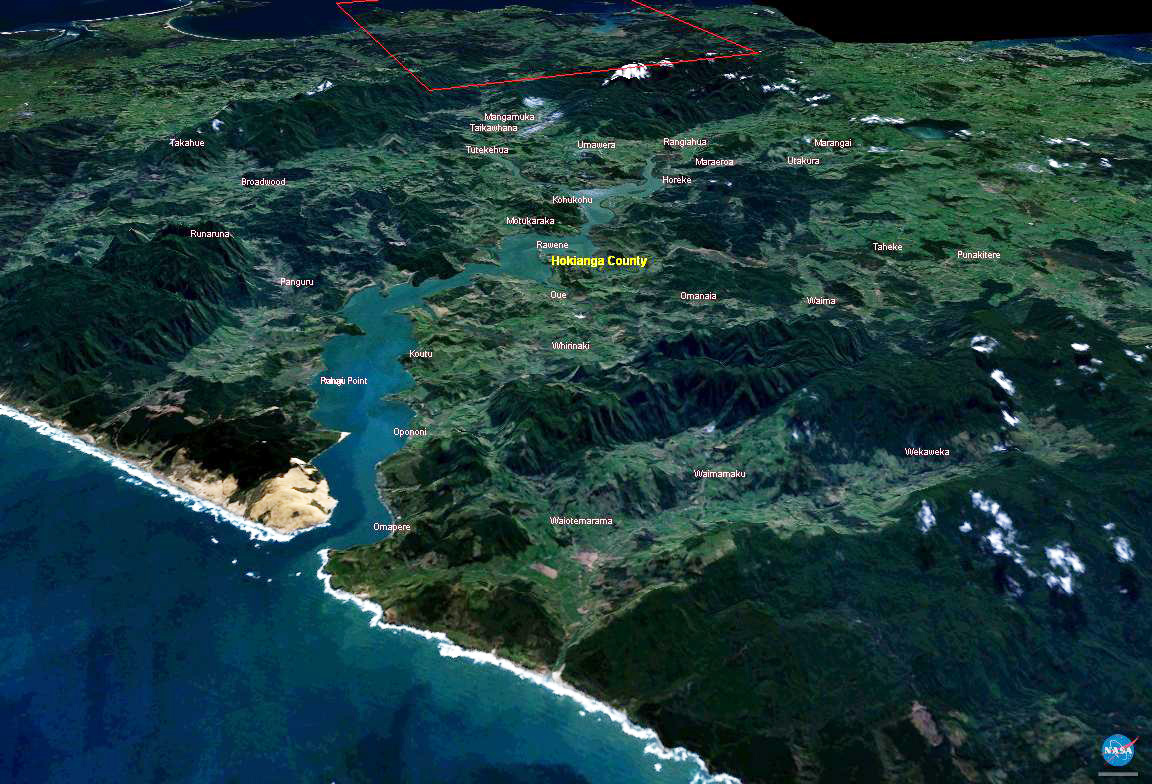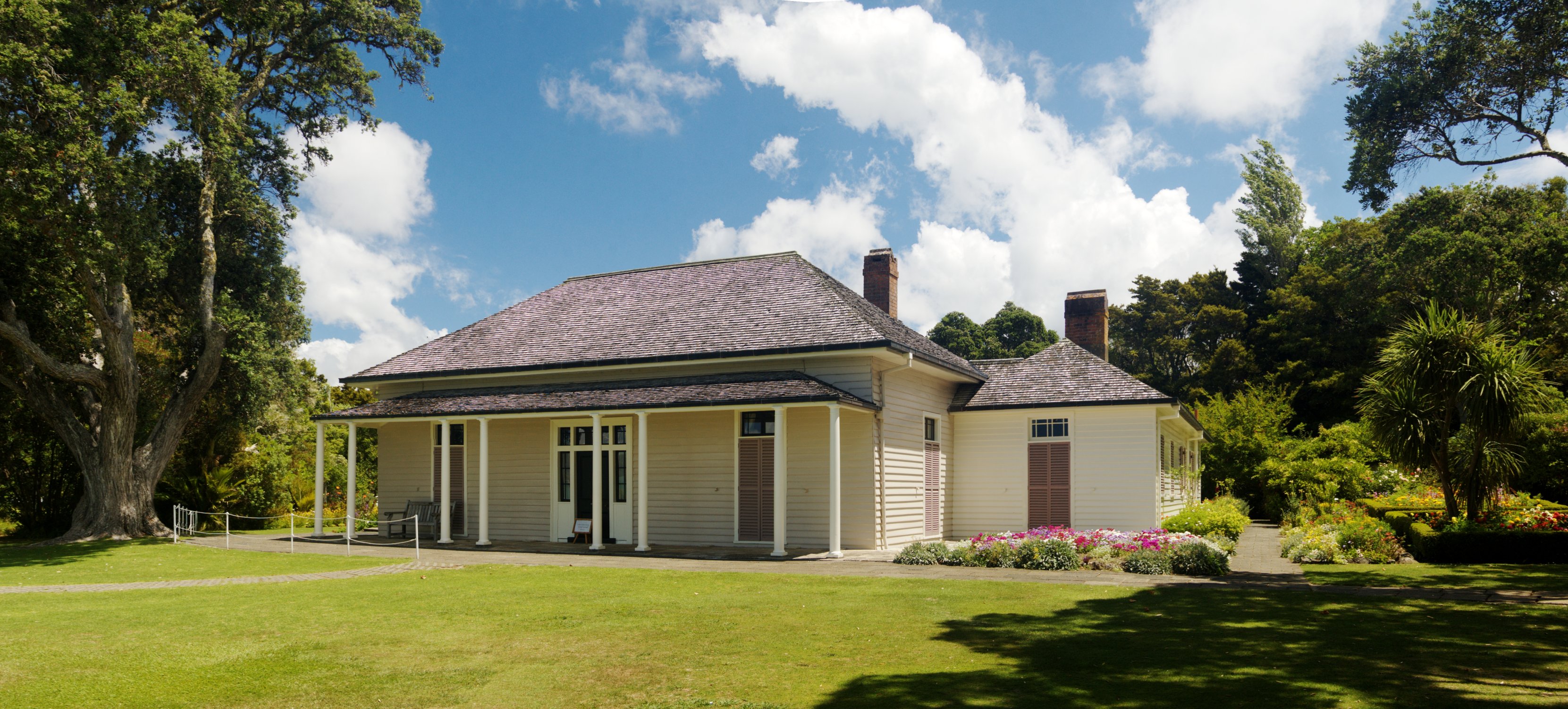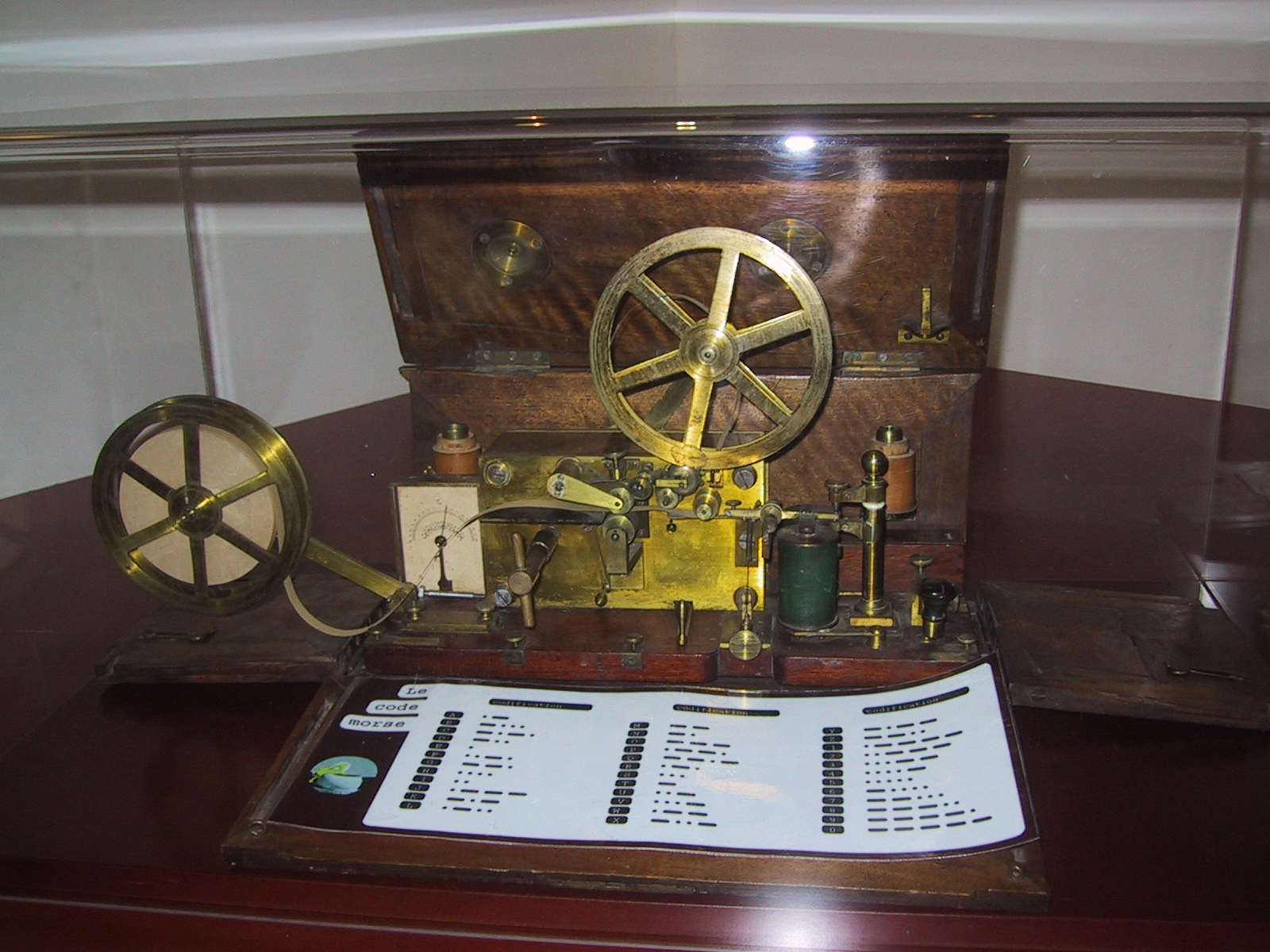|
Moetara
Moetara, later also known as Moetara Motu Tongaporutu (died 23 December 1838), was a tribal leader, agriculturalist and trader of the Ngāti Korokoro subtribe of the Ngāpuhi Māori iwi that lived on the south side of the Hokianga, New Zealand. When Moetara was a young man, his uncle Mauwhena (or Mauhena) was the chief of Ngāti Korokoro. In 1819, Moetara had a leadership position under Patuone, Nene and Tuwhare in a fighting expedition of northern tribes that travelled down the west coast of the North Island as far as Wellington. During the expedition two of Moetara's cousins died in Taranaki and it may have been because of this that he took the additional name Motu Tongaporutu, the name of a pā in Taranaki. When European ships started coming to the Hokianga for timber in the 1820s, Ngāti Korokoro under Mauwhena were well placed to profit from supplying them with food. One visiting captain, John Rodolphus Kent, married Moetara's sister, Wharo. Moetara continued to take part i ... [...More Info...] [...Related Items...] OR: [Wikipedia] [Google] [Baidu] |
Ngāpuhi
Ngāpuhi (also known as Ngāpuhi-Nui-Tonu or Ngā Puhi) is a Māori iwi associated with the Northland regions of New Zealand centred in the Hokianga, the Bay of Islands, and Whangārei. According to the 2023 New Zealand census, the estimated population of Ngāpuhi is 184,470. This compares to 125,601 in 2001, 102,981 in 2006, 122,214 in 2013. and 165,201 in 2018. It is formed from 150 hapū or subtribes, with 55 marae. Despite such diversity, the people of Ngāpuhi maintain their shared history and self-identity. Te Rūnanga ā Iwi o Ngāpuhi, based in Kaikohe, administers the iwi. The Rūnanga acts on behalf of the iwi in consultations with the New Zealand government. It also ensures the equitable distribution of benefits from the 1992 fisheries settlement with the government, and undertakes resource management and education initiatives. History Origins of Ngāpuhi Ngāpuhi, like most iwi, trace their pre-history back to the land of Hawaiki, most likely from Raiatea. ... [...More Info...] [...Related Items...] OR: [Wikipedia] [Google] [Baidu] |
Eruera Maihi Patuone
Eruera Maihi Patuone ( – 19 September 1872) was a Māori people, Māori rangatira (chief), the son of the Ngāti Hao chief Tapua and his wife Te Kawehau. His exact birth year is not known, but it is estimated that he was at least 108 years old when he died. His younger brother was Tāmati Wāka Nene. With his father and brother, he was one of the first Māori people to have contact with Europeans when James Cook's ship visited in 1769. Name He was named Patuone at birth and acquired his longer name when he was baptised by Henry Williams (missionary), Archdeacon Henry Williams at Paihia on Sunday, 26 January 1840, a few days prior to the initial signing of the Treaty of Waitangi on 6 February. Eruera Maihi (Edward Marsh) was the name of Williams' spiritual mentor in England, and this name was also given to Williams' oldest son. Patuone's third wife was Takarangi, sister of Te Kupenga, a chief of Ngāti Paoa. Takarangi was baptised at the same time, adopting the name Riria (L ... [...More Info...] [...Related Items...] OR: [Wikipedia] [Google] [Baidu] |
John Rodolphus Kent
John Rodolphus Kent (died 1 January 1837), also known as Amukete, was a Royal Navy officer and trader who settled in New Zealand in 1827. He first started sailing to New Zealand from Port Jackson (Sydney) in New South Wales in 1820. He settled at Koutu Point near Opononi in the Hokianga in 1827 under the protection of the Ngāti Korokoro chief Moetara. He then moved to Kawhia in 1828 to trade with the Waikato tribes. There he met Te Wherowhero, the paramount chief of Waikato, and married his daughter Tiria. He died at Kahawai on the Manukau Harbour The Manukau Harbour is the second largest natural harbour in New Zealand by area. It is located to the southwest of the Auckland isthmus, and opens out into the Tasman Sea. Geography The harbour mouth is between the northern head ("Burnett ... on 1 January 1837. See also * Elizabeth Henrietta (1816 ship) References 1837 deaths New Zealand traders Sealers Royal Navy officers Year of birth unknown Settlers of New Zea ... [...More Info...] [...Related Items...] OR: [Wikipedia] [Google] [Baidu] |
Ngāpuhi People
Ngāpuhi (also known as Ngāpuhi-Nui-Tonu or Ngā Puhi) is a Māori iwi associated with the Northland regions of New Zealand centred in the Hokianga, the Bay of Islands, and Whangārei. According to the 2023 New Zealand census, the estimated population of Ngāpuhi is 184,470. This compares to 125,601 in 2001, 102,981 in 2006, 122,214 in 2013. and 165,201 in 2018. It is formed from 150 hapū or subtribes, with 55 marae. Despite such diversity, the people of Ngāpuhi maintain their shared history and self-identity. Te Rūnanga ā Iwi o Ngāpuhi, based in Kaikohe, administers the iwi. The Rūnanga acts on behalf of the iwi in consultations with the New Zealand government. It also ensures the equitable distribution of benefits from the 1992 fisheries settlement with the government, and undertakes resource management and education initiatives. History Origins of Ngāpuhi Ngāpuhi, like most iwi, trace their pre-history back to the land of Hawaiki, most likely from Raiatea. The ... [...More Info...] [...Related Items...] OR: [Wikipedia] [Google] [Baidu] |
Māori People
Māori () are the Indigenous peoples of Oceania, indigenous Polynesians, Polynesian people of mainland New Zealand. Māori originated with settlers from East Polynesia, who arrived in New Zealand in several waves of Māori migration canoes, canoe voyages between roughly 1320 and 1350. Over several centuries in isolation, these settlers developed Māori culture, a distinct culture, whose language, mythology, crafts, and performing arts evolved independently from those of other eastern Polynesian cultures. Some early Māori moved to the Chatham Islands, where their descendants became New Zealand's other indigenous Polynesian ethnic group, the Moriori. Early contact between Māori and Europeans, starting in the 18th century, ranged from beneficial trade to lethal violence; Māori actively adopted many technologies from the newcomers. With the signing of the Treaty of Waitangi, Treaty of Waitangi/Te Tiriti o Waitangi in 1840, the two cultures coexisted for a generation. Rising ten ... [...More Info...] [...Related Items...] OR: [Wikipedia] [Google] [Baidu] |
Hokianga
The Hokianga is an area surrounding the Hokianga Harbour, also known as the Hokianga River, a long Estuary, estuarine drowned valley on the west coast in the north of the North Island of New Zealand. The original name, still used by local Māori people, Māori, is ''Te Kohanga o Te Tai Tokerau'' ("the nest of the northern people") or ''Te Puna o Te Ao Marama'' ("the wellspring in the world of light"). The full name of the harbour is Te Hokianga-nui-a-Kupe — "the place of Kupe's great return". Geography The Hokianga is in the Far North (district), New Zealand, Far North District, which is in the Northland Region. The area is northwest of Whangārei City—and west of Kaikohe—by road. The estuary extends inland for from the Tasman Sea. It is navigable for small craft for much of its length, although there is a bar across the mouth. In its upper reaches the Rangiora Narrows separate the mouths of the Waihou and Mangamuka Rivers from the lower parts of the harbour ... [...More Info...] [...Related Items...] OR: [Wikipedia] [Google] [Baidu] |
Tāmati Wāka Nene
Tāmati Wāka Nene (1780s – 4 August 1871) was a Māori rangatira (chief) of the Ngāpuhi iwi (tribe) who fought as an ally of the British in the Flagstaff War of 1845–1846. Early life Tāmati Wāka Nene was born to chiefly rank in the Ngāpuhi ''iwi'' (tribe) of the Bay of Islands and Hokianga regions of the North Island of New Zealand. His father was Tapua, a '' rangatira'' (chief) of the ''hapu'' (subtribe) Ngāti Hao in the Hokianga. The date of his birth was around the 1780s and his elder brother was Eruera Maihi Patuone. He was related to the warrior Hongi Hika and could trace his ancestry back to Rāhiri, the founder of the Ngāpuhi. Nene rose to be one of the war leaders of the Ngāpuhi. It is likely that one of his earliest battles was in about 1800, against the Ngare Raumati. Nene took an active part in the Musket Wars of 1818 to 1820, leading his warriors on a rampage the whole length of the North Island, killing and plundering as he went until he reached Cook ... [...More Info...] [...Related Items...] OR: [Wikipedia] [Google] [Baidu] |
Taranaki
Taranaki is a regions of New Zealand, region in the west of New Zealand's North Island. It is named after its main geographical feature, the stratovolcano Mount Taranaki, Taranaki Maunga, formerly known as Mount Egmont. The main centre is the city of New Plymouth. The New Plymouth District is one of three in the region and is home to more than 65 per cent of the population of Taranaki. The Stratford District includes the main centres of Stratford, New Zealand, Stratford, Midhirst, Toko and Whangamōmona, Whangamomona. The South Taranaki District includes Hāwera, Manaia, Taranaki, Manaia, Eltham, New Zealand, Eltham, and Ōpunake. Since 2005, Taranaki has used the promotional brand "Like no other". Geography Taranaki is on the west coast of the North Island, surrounding the volcanic peak of Mount Taranaki. The region covers an area of 7258 km2. Its large bays north-west and south-west of Cape Egmont are North Taranaki Bight and South Taranaki Bight. Mount Taranaki is t ... [...More Info...] [...Related Items...] OR: [Wikipedia] [Google] [Baidu] |
Opononi
Opononi is a settlement on the south shore of Hokianga Harbour in Northland Region, Northland, New Zealand. New Zealand State Highway 12, State Highway 12 runs through Opononi. Ōmāpere is on the shore to the south of Opononi and Pakanae is to the northeast. According to the New Zealand Ministry for Culture and Heritage, the name Opononi roughly translates to "place of crooked fishing post" in Māori language, Māori. History European settlement John Webster arrived in New Zealand in 1841. In 1855, he bought 700 acres of rough land at Opononi, and established a homestead and pastoral farm. He developed this into a showplace, entertaining vice-royalty several times. He also built a wharf, gum-store and a trading store. In 1894, Webster put the house and farm on the market. The store and gum store were taken over by Alfred Sprye Andrewes who later converted the gum store into a two storey hotel. 20th century The Opononi Post and Telephone was opened in 1892 and operated until ... [...More Info...] [...Related Items...] OR: [Wikipedia] [Google] [Baidu] |
Waitangi, Northland
Waitangi is a locality on the north side of the Waitangi River (Far North District), Waitangi River in the Bay of Islands, north of Whangārei, on the North Island of New Zealand. It is close to the town of Paihia, to which it is connected by a bridge near the mouth of the Waitangi River estuary. While Statistics New Zealand and NZ Post consider the southern boundary of Waitangi to be the river and estuary, with the area further south being part of Paihia, the area by Te Tī Bay, immediately south of the river, is sometimes referred to as part of Waitangi. The Treaty of Waitangi was first signed at Waitangi on 6 February 1840. It is also the place where the Declaration of Independence of New Zealand was signed five years earlier, on 28 October 1835. This document was ratified by the British Crown the following year (1836). "Waitangi" is a Māori-language name meaning "noisy waters" or "weeping waters", probably referring to the Haruru, New Zealand, Haruru Falls on the Waitan ... [...More Info...] [...Related Items...] OR: [Wikipedia] [Google] [Baidu] |
1838 Deaths
Events January–March * January 10 – A fire destroys Lloyd's Coffee House and the Royal Exchange in London. * January 11 – At Morristown, New Jersey, Samuel Morse, Alfred Vail and Leonard Gale give the first public demonstration of Morse's new invention, the telegraph. * January 21 – The first known report about the lowest temperature on Earth is made, indicating in Yakutsk. * January 23 – A 7.5 earthquake strikes the Romanian district of Vrancea causing damage in Moldavia and Wallachia, killing 73 people. * February 6 – Boer explorer Piet Retief and 60 of his men are massacred by King Dingane kaSenzangakhona of the Zulu people, after Retief accepts an invitation to celebrate the signing of a treaty, and his men willingly disarm as a show of good faith. * February 17 – Weenen massacre: Zulu impis massacre about 532 Voortrekkers, Khoikhoi and Basuto around the site of Weenen in South Africa. * February 24 – U.S. Representatives William J. Graves ... [...More Info...] [...Related Items...] OR: [Wikipedia] [Google] [Baidu] |
New Zealand Traders
New or NEW may refer to: Music * New, singer of K-pop group The Boyz * ''New'' (album), by Paul McCartney, 2013 ** "New" (Paul McCartney song), 2013 * ''New'' (EP), by Regurgitator, 1995 * "New" (Daya song), 2017 * "New" (No Doubt song), 1999 * "new", a song by Loona from the 2017 single album '' Yves'' * "The New", a song by Interpol from the 2002 album ''Turn On the Bright Lights'' Transportation * Lakefront Airport, New Orleans, U.S., IATA airport code NEW * Newcraighall railway station, Scotland, station code NEW Other uses * ''New'' (film), a 2004 Tamil movie * New (surname), an English family name * NEW (TV station), in Australia * new and delete (C++), in the computer programming language * Net economic welfare, a proposed macroeconomic indicator * Net explosive weight, also known as net explosive quantity * Network of enlightened Women, an American organization * Newar language, ISO 639-2/3 language code new * Next Entertainment World, a South Korean media com ... [...More Info...] [...Related Items...] OR: [Wikipedia] [Google] [Baidu] |





